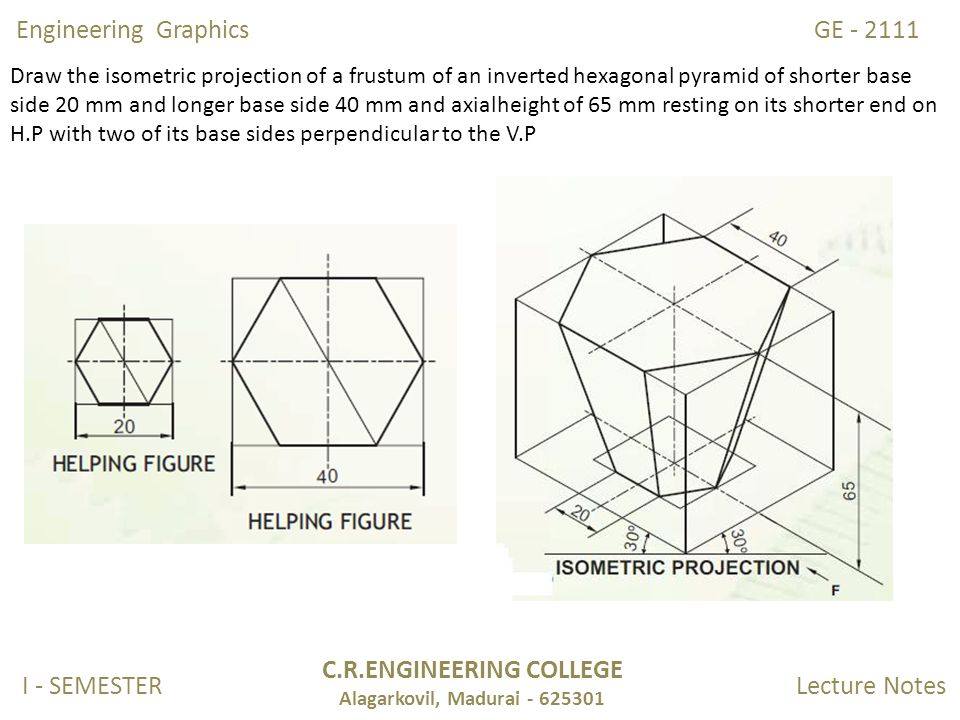Isometric Projection - 4
Isometric Projection - 4
Dear Students,
Good Morning!
Today we will study Isometric Projection of Frustums placed in inverted position. We will start with understanding what an inverted Frustum is.
1. What is an inverted Frustum?
A frustum in which the base edge is smaller than the top edge is called as an inverted frustum. Refer figure above. There is no difference in construction of its Isometric Projection when compared to a regular/normal frustum. We adopt the same procedure as studied yesterday in blog titled, Isometric Projection - 3.
2. In what way can a Frustum be positioned?
In almost all the questions asked in examination, the solid axis of the frustum will be perpendicular to the HP. The only parameter to take care is the placing of the base on the frustum on the HP. For example, two edges of the base of a frustum of a hexagonal pyramid could either be paraller or perpendicular to the VP. In case of a frustum of a pentogonal pyramid, one base edge could either be parallel or perpendicular to the VP and also neaer or away from the observer.
Exercise - 4 : Inverted Frustums
Instructions:
a. Show direction of viewing, mark its centre and mention dimensions in all the questions.
b. Solve these questions in your drawing file
c. Please take a picture of your answers and post them in the EG Group.
Q 1.

Q 2. Draw the Isometric Projection of a Frustum of a cone in an inverted position.
Q 3. Draw Isometric Projection of a frustum of a triangular pyramid having base edge 30 mm and top edge 50 mm and height 80 mm placed on the HP with one of its base edges perpendicular to the VP.
Good morning sir
ReplyDeleteGood Morning Students
ReplyDeleteGood morning sir,Kushar this side
ReplyDeleteGo through the theory part in today's blog in 15 minutes and start attempting the questions in Exercise - 4 and share your answers on the EG Whatsapp group.
ReplyDeleteSir i dont have rollerscale with me but i will try to do the questions. I managed to arrange the other instruments.
DeleteOk, go ahead. Try to maintain as much precision as you can.
DeleteIf you have no doubts to ask, please start answering the exercise questions.
ReplyDeleteexcuse me sir, in the first question, why is there a need to box the frustum if the frustum is the main figure?
ReplyDelete